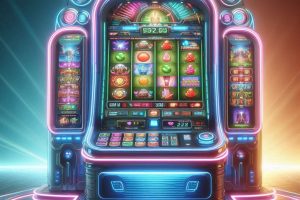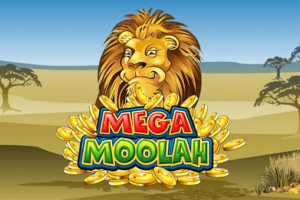Pawn Stars is a TV show that is based on a pawn shop located in Las Vegas, Nevada, home to a large number of in-person casino games. But if you are interested in online casino games, check out Juicy Stakes online casino.
Being a Pawn Shop located in Las Vegas and a hit TV series, interesting items get sold and bought, including casino and gaming-related items. Here are a few that are really interesting.
Sahara Casino Chips
Some of the highest rollers in old-school Vegas might have used these chips. They’re real and you could take them down to cash them out right now if you wanted to. Sahara Las Vegas is a hotel and casino located on the Las Vegas Strip in Winchester, Nevada.
The chips that were sold on Pawn Stars were “High Stakes Chips”. They were actually rectangular plaques, not circle chips. They came in different sizes to represent different denominations. Sahara Casino is one of the oldest Casinos in Las Vegas. The Sahara officially closed its doors on May 16, 2011, after 59 years on the Las Vegas strip, which is why the Chips were worth more as a collector’s item than their original money value.
The chips were sold for $250.
Stardust Casino Backjack Table
The Stardust Casino was one of the most famous casinos in Las Vegas. Having an authentic blackjack table from their casino was valued at $2500. It is not just a velvet mat you place on top of another table. It is an actual table.
The Stardust Casino was open from 1958 – 2006. At its opening, it was the largest Casino in Las Vegas. Hotel rooms rented for $6/night.
The Blackjack table was sold for $2500.
1898 Full Deck Slot Machine
The Full Deck was patented on July 20, 1987. Before the 20th century, the term “slot machine” was also used to describe vending machines. Charles Fey is credited with manufacturing the first modern-day slot machine in the late 1800s. In 1909, San Francisco became one of the first cities to ban slot machines.
To make the odds better for the house, two cards were typically removed from the deck: the ten of spades and the jack of hearts, which doubles the odds against winning a royal flush. (So even though the name said “Full Deck”, it rarely actually was a “Full Deck”.)
This slot machine sold for $12,000.
1930s Slot Machine
This slot machine looks more like what we would envision a slot machine looking like.
This is a mechanical slot machine, not a modern electronic one. So even after almost 100 years, it was still in good working condition. It just needed a bit of restoration.
The first slot machine was invented in 1895; it was made of cast iron and weighed over 100 pounds. And your phone running a Juicy Stakes online slot machine weighs just under half a pound. My how times have changed. Anyway …
Early slot machines dispensed candy or gum in order to appear legal, but most owners simply exchanged these trinkets for cash to encourage gambling. Some even placed a show panel of gum/candy on the front, so you could not actually even buy the candy/gum.
Famous slot machine symbols, such as cherries, melons, and the BAR symbol. BAR was an early version of the Bell-Fruit Gum Company’s logo.
When you look at an image of this old-fashioned slot machine, it is actually quite impressive from an engineering and artistic standpoint.
The slot machine sold for $1,400.

1768 Lottery Ticket
Yep, the government selling lottery tickets is older than the actual United States of America. Can you believe that?
The ticket was made on hand-laid paper. Each ticket had a handwritten number on it.
The first state-sponsored lottery in the U.S. was held in Massachusetts. Most colonies used lotteries instead of taxes as revenue sources.
In 1890, lotteries were banned in the U.S. due to fraud, but were reinstated in 1960. The government needed the money.
Lotteries are one of those strange things. It was “sold” to the American public by telling the people that the winnings go to public schools. Who would be against money being allocated to the education of children?
In reality, let’s say that the lottery brings in $10 million dollars during a given year. The government just reduced the amount that the lottery is expected to bring in by that amount (or close to it), and then reallocates those funds to other things that are not as glamorous to sell to the public … like fixing bridges and brakes on trains, so they do not run off the rails and spill a bunch of chemicals into the ground and the air .. but I am getting distracted.
The lottery ticket sold on the Pawn Stars show is worth around $20,000,000.
1800s Bowling Ball
Bowling is not your traditional casino game, but it is considered a sport and people bet on sports. Plus, this is item is just plain awesome.
It is a bowling ball made of wood.
Today’s bowling balls have an inner core that is made of powdered metal oxides such as calcium or iron oxide mixed with a resin and catalyst to harden the mixture. This is the heaviest part of the ball, and its shape—whether symmetric like a sphere or asymmetric like a lightbulb—influences how the ball rotates down the lane.
The outside of the ball is made with polyester, urethane, and resin (reactive urethane). The least expensive material, polyester, doesn’t give as much hook since it’s unaffected by the oils on the lane.
Bowling balls are heavy, because they are easier to control. If you want to introduce a child to bowling, go with duckpins, which are essentially the same as bowling, except the balls are much smaller and lighter. So they are great for kids.
Before wooden bowling balls, bowling balls were made of stone. The sport of bowling has existed since the times of Egypt back in 3200 B.C. (Archeologists discovered a bowling ball and pins dating back to this time period).
But the wooden bowling ball in Pawn Stars is dated from the 1800s and it is worth around $150.

1861 Gambling Set
This set had every game of the gambling trade, a secret compartment, and intricately decorated dividers.
I can see the chips, so I would assume it also had cards and dice. But beyond that, I cannot tell from the pictures what is supposed to be included in the kit.
In the mid to late 19th century, many gamblers made their living traveling across the American west and setting up temporary casinos in inns and saloons.
Gambling kits often included weapons to protect their owners from angry (and often inebriated) customers.
Poker evolved in the bars of New Orleans in the early 19th century from traditional sailors’ games, and traveled north and west with early settlers.
Early dice and gambling chips were made from carved ivory or bone, and are descended from the knucklebones used by ancient gamblers and fortune-tellers.
The first known playing cards date back to 9th-century China. Traders brought card games to Europe in the 14th century.
On Pawn Stars, it was sold for $3600. From Pawn Stars, it was sold to another pawn shop who then sold it to another individual.
Pawn Stars: The Game
Pawn Stars: The Game is available on the App Store and Google Play.






 Your total news and information resource for all things Science, Technology, Engineering / Mathematics, Art, and Medicine / Health.
Your total news and information resource for all things Science, Technology, Engineering / Mathematics, Art, and Medicine / Health.
Leave a Comment